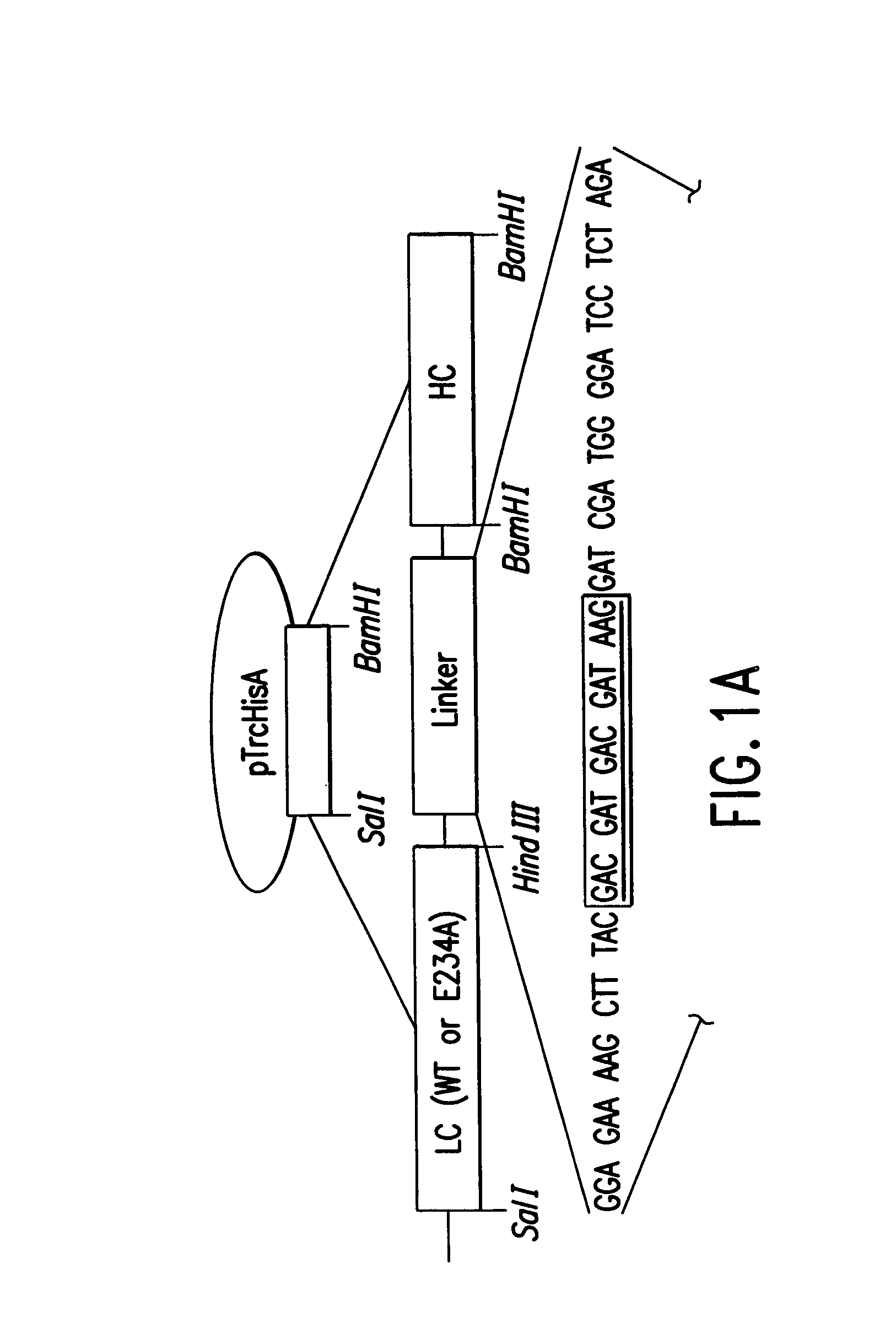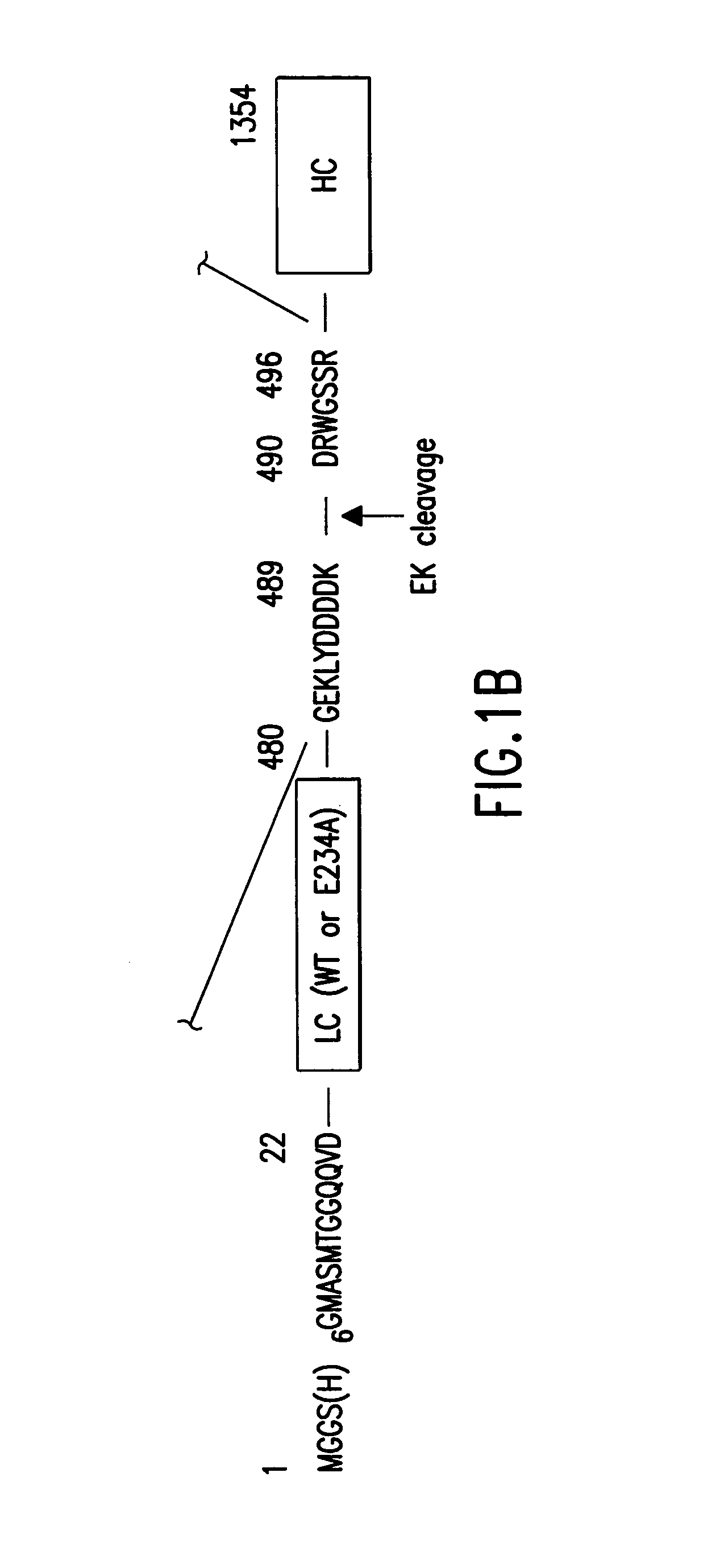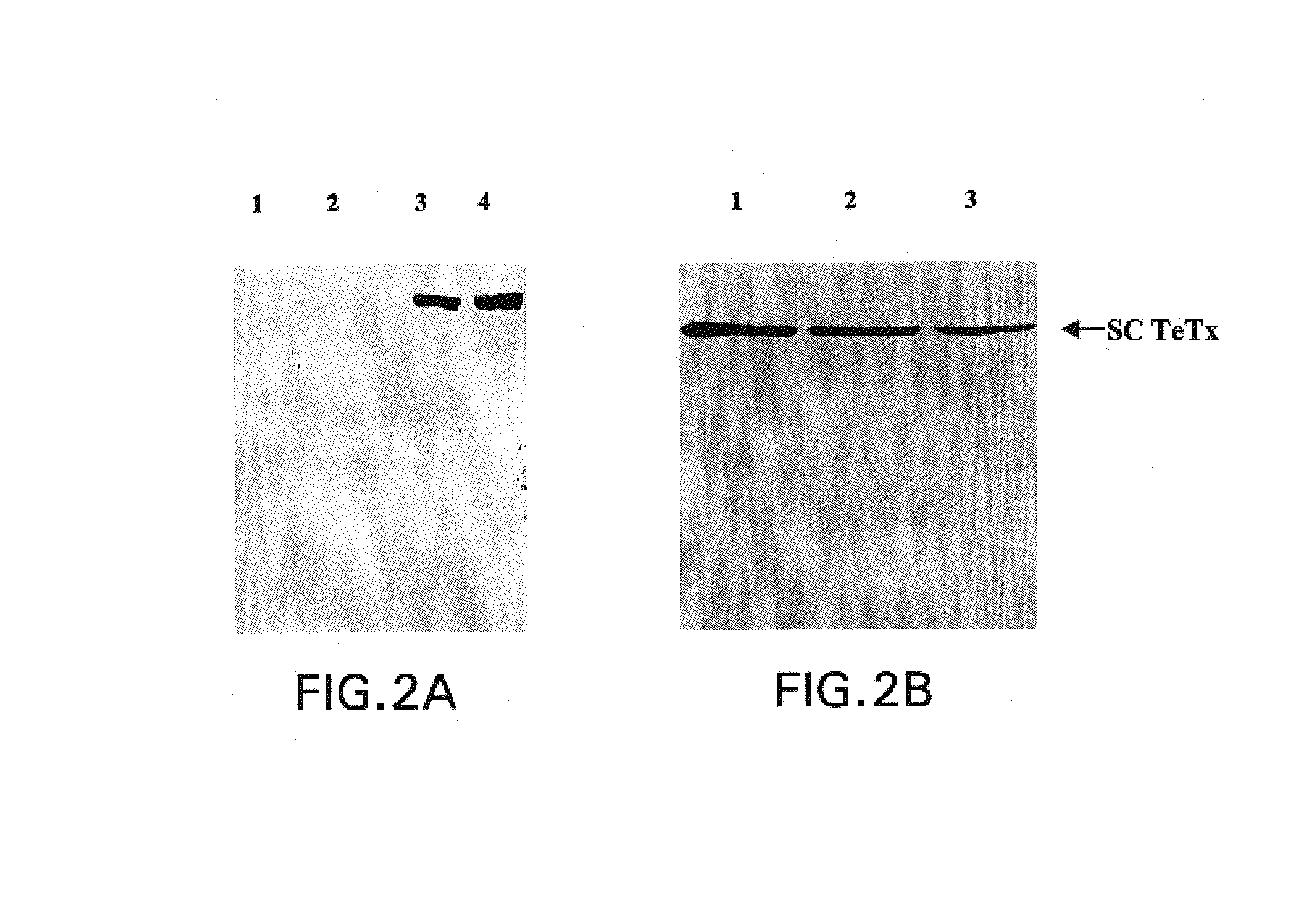Activatable recombinant neurotoxins
a neurotoxin and recombinant technology, applied in the field of neurotoxicology, can solve the problems of high toxicity of mature neurotoxin, difficult industrial production of toxin, and inability to bind to clostridium clostridium, so as to avoid resistance mechanisms and avoid the effect of neutralizing effectiveness
- Summary
- Abstract
- Description
- Claims
- Application Information
AI Technical Summary
Benefits of technology
Problems solved by technology
Method used
Image
Examples
example 1
Construction of an Expression Vector Containing a Single Chain TeTx Coding Region
[0097]The present invention can be exemplified describing the construction of a plasmid that will express TeTx in E. coli as a single protein that is readily purified, i.e., by affinity chromatography. TeTx can be chosen as a pilot system because (i) the availability of an excellent vaccine greatly reduces the risk of its handling and (ii) it is the most comprehensively studied of the toxins in terms of expressing HC and LC domains. However, those of skill in the art will understand that the same or similar strategies may be employed using any dichain or binary toxin or other bioactive molecule expressed as a single polypeptide and activated by proteolytic cleavage. Single chain molecules were constructed containing the wild type TeTx L chain and a mutated version of the TeTx light chain wherein a glutamic acid residue at position 234 is changed to an alanine (termed “E234A”, Ala234, or “the E234A mutan...
example 2
Expression and Physical Characterization of Single-Chain TeTx
[0119]Expression of the pTrcHisA-based single chain TeTx construct (under control of a hybrid trp / lac promoter) is induced by addition of 1 mM IPTG (isopropyl thio-galactopyranoside) to a confluent culture of a representative transformant clone in 200 ml Luria broth containing 100 μg / ml ampicillin and incubating further at 37° C. for 16 hours before cell harvest by centrifugation.
[0120]The cell pellets are resuspended in 30 ml Buffer A (20 mM Na2PO4, 500 mM NaCl (pH 7.8)), then lysed by ultrasonication at 4° C., using 10-second bursts at a medium setting. Insoluble debris is removed by centrifugation at 9,000×g for 30 min at 4° C., and the supernatant recovered by centrifugation.
[0121]The supernatant containing each single chain construct is incubated for 20 minutes at 22° C. with 2 ml of nickel-ion resin (Invitrogen Corp.) for affinity purification by means of chelation between the histidine residues at the amino terminus...
example 3
SDS-PAGE and Western Blot Analysis of Recombinant Single-Chain TeTx
[0122]The single-chain TeTx constructs are grown in Luria broth containing ampicillin at 37° C., and aliquots taken both before and after induction of protein expression with IPTG. Crude cell extracts are prepared for SDS-PAGE by dilution in sample buffer under reducing conditions in the presence of β-mercaptoethanol (BME). Following SDS-PAGE electrophoresis, the separated proteins are Western-blotted as follows: the proteins are electrophoretically transferred to a polyvinylidenedifluoride (PVDF) membrane using standard methods (see, e.g., Sambrook et al., Molecular Cloning, A Laboratory Manual (2d ed. Cold Spring Harbor Laboratory Press 1989), hereby incorporated by reference in its entirety), the membrane treated to reduce background Ig binding, and then probed using an anti-His6 antibody, followed by detection using an alkaline phosphatase-conjugated secondary antibody and development with a 5-bromo-4-chloro-3-in...
PUM
| Property | Measurement | Unit |
|---|---|---|
| body weight | aaaaa | aaaaa |
| pH | aaaaa | aaaaa |
| molecular weight | aaaaa | aaaaa |
Abstract
Description
Claims
Application Information
 Login to View More
Login to View More - R&D
- Intellectual Property
- Life Sciences
- Materials
- Tech Scout
- Unparalleled Data Quality
- Higher Quality Content
- 60% Fewer Hallucinations
Browse by: Latest US Patents, China's latest patents, Technical Efficacy Thesaurus, Application Domain, Technology Topic, Popular Technical Reports.
© 2025 PatSnap. All rights reserved.Legal|Privacy policy|Modern Slavery Act Transparency Statement|Sitemap|About US| Contact US: help@patsnap.com



